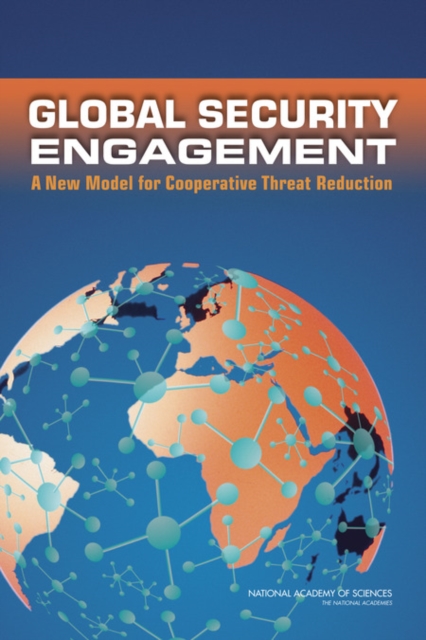
Global Security Engagement : A New Model for Cooperative Threat Reduction Paperback / softback
by National Academy of Sciences, Policy and Global Affairs, Committee on International Security and Arms Control, Committee on Strengthening and Expanding the Department of Defense Cooperative Threat Reduction Prog
Paperback / softback
- Information
Description
The government's first Cooperative Threat Reduction (CTR) programs were created in 1991 to eliminate the former Soviet Union's nuclear, chemical, and other weapons and prevent their proliferation.
The programs have accomplished a great deal: deactivating thousands of nuclear warheads, neutralizing chemical weapons, converting weapons facilities for peaceful use, and redirecting the work of former weapons scientists and engineers, among other efforts. Originally designed to deal with immediate post-Cold War challenges, the programs must be expanded to other regions and fundamentally redesigned as an active tool of foreign policy that can address contemporary threats from groups that are that are agile, networked, and adaptable.
As requested by Congress, Global Security Engagement proposes how this goal can best be achieved. To meet the magnitude of new security challenges, particularly at the nexus of weapons of mass destruction and terrorism, Global Security Engagement recommends a new, more flexible, and responsive model that will draw on a broader range of partners than current programs have.
The White House, working across the Executive Branch and with Congress, must lead this effort. Table of ContentsFront MatterExecutive SummaryOverviewIntroduction1 The Evolution of Cooperative Threat Reduction2 Cooperative Threat Reduction in the 21st Century: Objectives,Opportunities, and Lessons3 The Form and Function of Cooperative Threat Reduction 2.0:Engaging Partners to Enhance Global Security4 The Role of the Department of Defense in Cooperative ThreatReduction 2.05 Cooperative Threat Reduction 2.0: Implementation ChecklistList of AcronymsAppendixesAppendix A: H.R. 1585: National Defense Authorization Act forFiscal Year 2008Appendix B: Biographical Sketches of Committee MembersAppendix C: Department of Defense Cooperative Threat ReductionProgram History: ReferencesAppendix D: List of Committee Meetings and SpeakersAppendix E: The Evolution of U.S.
Government Threat ReductionProgramsAppendix F: Nunn-Lugar ScorecardAppendix G: The G8 Global Partnership: Guidelines for New orExpanded Cooperation ProjectsAppendix H: A Comparison of the Characteristics of Six WeaponsSystems from the Perspective of a State or Terrorist OrganizationAppendix I: Department of Defense Cooperative Threat ReductionProgramsAppendix J: Congressional Guidelines and Corresponding Findings andRecommendations
Information
-
Out of Stock - We are unable to provide an estimated availability date for this product
- Format:Paperback / softback
- Pages:180 pages
- Publisher:National Academies Press
- Publication Date:29/08/2009
- Category:
- ISBN:9780309131063
Other Formats
- PDF from £30.78
- EPUB from £43.19
Information
-
Out of Stock - We are unable to provide an estimated availability date for this product
- Format:Paperback / softback
- Pages:180 pages
- Publisher:National Academies Press
- Publication Date:29/08/2009
- Category:
- ISBN:9780309131063